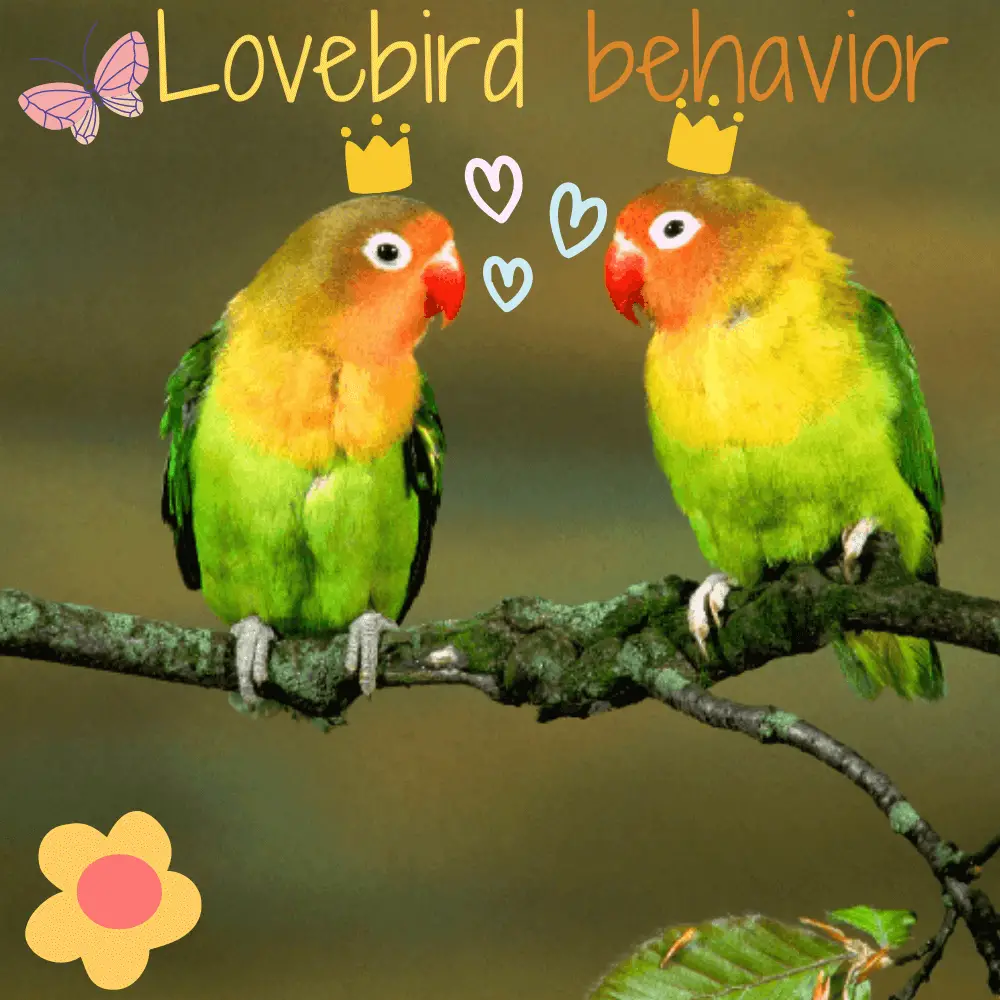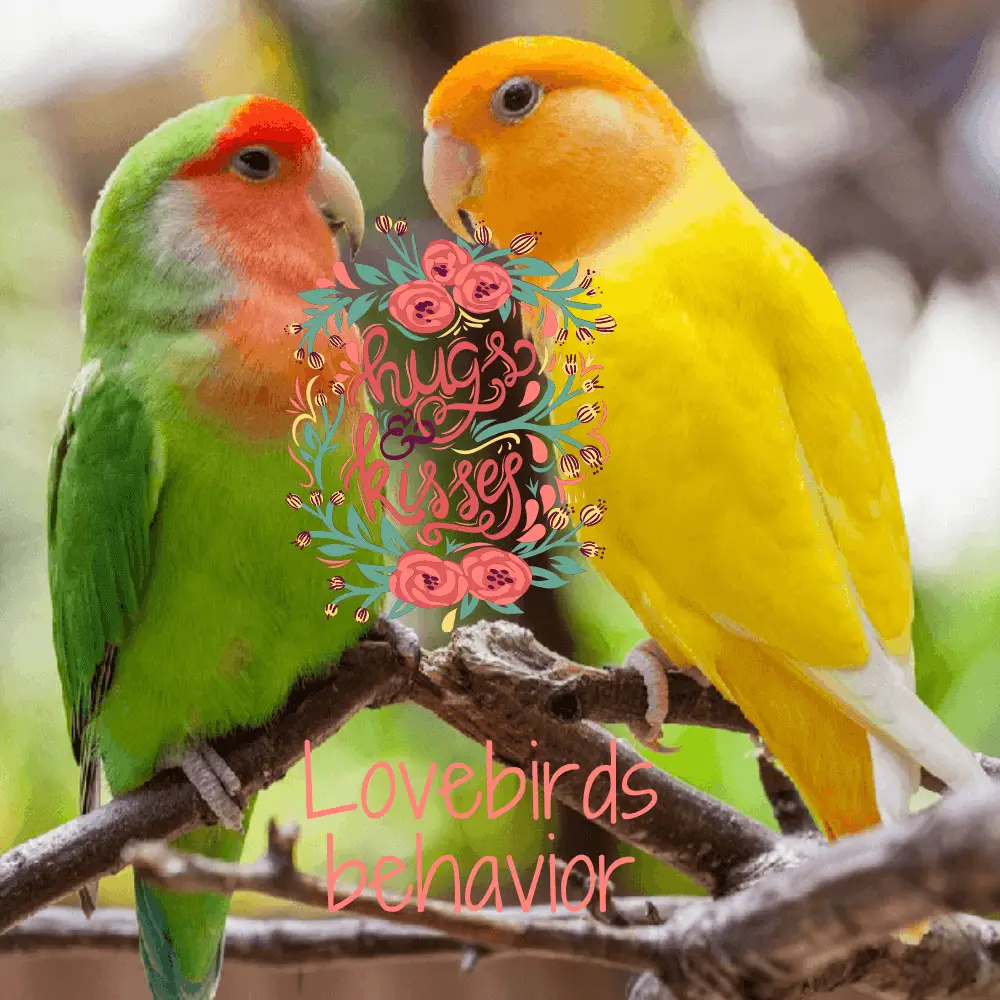
Lovebird behavior They have a very particular lifestyle, in fact, they are always two, hence their names. They live mainly in southern Africa, but they are also very present in Madagascar.
The genus Agapornis means “Love and bird”, which is why we can qualify the inseparable as lovers. There are several kinds of lovebirds such as the rosy-faced lovebird, Fischer’s lovebird, the masked lovebird, but also the one with “black cheeks Lovebird”, gray-headed or red-headed, Abyssinian… Through this article, we will try to provide you with answers about the behavior of your lovebirds.
What is a lovebird?
The inespérables are very endearing little parrots that are pleasant to watch. Their sizes vary between 12 and 16 cm depending on their species and their characteristics. The average weight of a lovebird varies between 40 and 60g. Their tail is rather rounded, and their beaks are very powerful. The color of their coat may vary depending on the species, but they are usually very bright colors.

The character of lovebirds
Lovebirds are very cheerful in nature, they are not only beautiful to look at, but they are also very entertaining, and intelligent animals. They are easily recognizable parrots by their repetitive squawking, which can sometimes become annoying. You just need to be depressed for a moment, you look at them, they will make you smile. You could say it’s an antidepressant.
Birds of Paradise Lovebirds
SOURCE:National Geographic
Lovebirds behavior
There is no standard of character for lovebirds, each animal has its own characteristics. As we mentioned before, lovebirds are very lively by nature, they are animals that like to roost everywhere. Do not hesitate to provide a perch, for their greatest pleasure. Lovebirds are animals that love to stretch, for this you can regularly see them stretching a dough, or their necks, they are ready to adopt rather absurd positions. They are real, very agile acrobats. Linked to this behavior, lovebirds love to yawn all the time, they are also cleanliness inspectors, they wash regularly just like a cat. Regularly, they cut their beaks against a hard wall energetically. So don’t panic,
Adopt lovebirds
To buy lovebirds, you may need to follow some advice.
-
Think carefully before buying a lovebird
Lovebird as pet: Chooses a place of purchase other than a pet store, for example at a breeder. The health of your animal will be guaranteed there. Provide safe accommodation, for your lovebirds, you must take a cage large enough to allow them to move with ease. Buy everything that is necessary for its well-being before purchasing your animal, that is to say, the cage, its food, but also its litter,… You must always ask yourself the right questions before purchasing lovebirds: do I really want it, do I have time to take care of it, do I have room?
-
Provide optimal space for your lovebirds
The purchase of the cage is a very important step, you should make sure to buy a relatively large cage and place it in a place that receives a lot of light. You must prepare it before the arrival of your birds so that they can evolve in good conditions. The cage should be in a peaceful place, with some noise all the same so that he does not feel abandoned. If you are unsure of how to place your cage, the best solution is to position it against a wall at eye level, this will give your birds a sense of protection. The temperature of the room should be similar to that of the breeder, so remember to ask for advice when buying birds. Do not place your birds near a hot draft or in a humid place. Also remember to never put your birds outside, always place them inside in a quiet place. The kitchen is not a good place to place them, due to food vapors which can be harmful to them.
Training lovebirds
SOURCE:ILiuHa BrO
How Training lovebirds Ste by step:
-
A balanced and varied diet
Check with the breeder beforehand about the food you need to provide your bird. The diet must be diversified, for this, you can opt for mixtures of seeds, or vegetables accompanied by fruit. Water is also very important, it must be provided in sufficient quantity and always clean. It is essential to provide the best possible food for your birds so that they can develop in the best conditions. Also if you need to change the diet of your lovebirds, be sure to do this little by little.
-
Respect a certain period for the purchase of lovebirds
As with any animal, certain periods are more favorable, this is also the case for the purchase of lovebirds. The best period is to fall. Indeed this is the period when breeders have a large number of birds. It is during this period that you will have much more choice on the color of your future animal, but also with regard to its species, its size, and many other selection criteria. It is also the end of the hot weather which is more suitable for adaptation to a new environment.
-
Consultation with a veterinarian specializing in NACs
They are very resilient animals, they do not get sick often and if so, they recover quickly. Some individuals can still be exposed to certain diseases such as dermatitis. It can also happen that your animals carry a disease of the beak. If this is the case, you should go to a veterinarian specializing in this type of animal who will be able to advise you and treat your animal.
5 Mistakes in Training a LoveBird! (Don’t Repeat)
SOURCE:ILiuHa BrO
-
Points to watch out for when choosing your lovebirds
Prefer birds that are about 6 months old, with beautiful, soft, and pheasant plumage. They should appear strong and healthy. The plumage should surround the upper part of the digestive tract. The torso should appear muscular and strong. In addition, a bird that appears healthy will clean itself regularly and have strong contact with its relatives. If this is not the case, there may be complications in his health.
Generally speaking, adopting lovebirds is not a decision to be taken lightly. You need to make sure you have enough time, space, and financial resources, this is a long-term commitment as lovebirds live an average of 12 to 15 years.
Related Article:




















